The 1980s: A Chance Discovery, A Complex Emergency
As we celebrate Freese and Nichols’ 130th anniversary, this series will chronicle company achievements decade by decade. These posts are based on A Century in the Works, written by Deborah Sizemore and published in 1994.
Growing more versatile during the 1980s, Freese and Nichols completed numerous signature projects, including Richland-Chambers Reservoir in East Texas; O.H. Ivie Reservoir — whose dam is named after Simon Freese — in West Texas; environmental services for Austin’s Loop 1 overpass crossing Barton Creek; multiple facilities at Fort Bliss in El Paso; and air traffic control and navigation systems for the FAA throughout the Southwest U.S. By the 1980s, the structural framework of Texas was showing its age. Freese and Nichols found steady work designing repairs and improvements to existing infrastructure and our federal business began to boom.
In 1983, Freese and Nichols designed control towers, assorted steel-reinforced concrete buildings and other facilities for two IRETS ranges (realistic moving target infantry rifle ranges) at Fort Bliss. At Fort Hood in 1985, the firm developed site plans and designed streets, a jogging trail, a helipad, landscaping and various other facilities for the III Corps Headquarters. For Brooke Army Medical Center, a 450-bed teaching facility at Fort Sam Houston, the firm designed utilities and storm drainage systems. At forty-year-old Carswell Air Force Base, the firm designed $1.1 million in runway improvements.
The FAA’s Southwest Region had contracted with an outside consultant for aviation-related engineering. Under the five-year agreement, Freese and Nichols helped airports in Texas, New Mexico, Oklahoma, Arkansas and Louisiana transition to state-of-the-art navigation aids, air traffic control and automated airport operations. Designs were prepared for runway approach lighting and guidance systems, wind shear detection systems, regional radar sites, and new air traffic control towers.
The project that received the highest accolades, though, started as a chance discovery and became a unique challenge. About an hour west of Fort Worth, the historic Morris Sheppard Dam, impounding Possum Kingdom Lake on the Brazos River, was slowly sliding downstream.
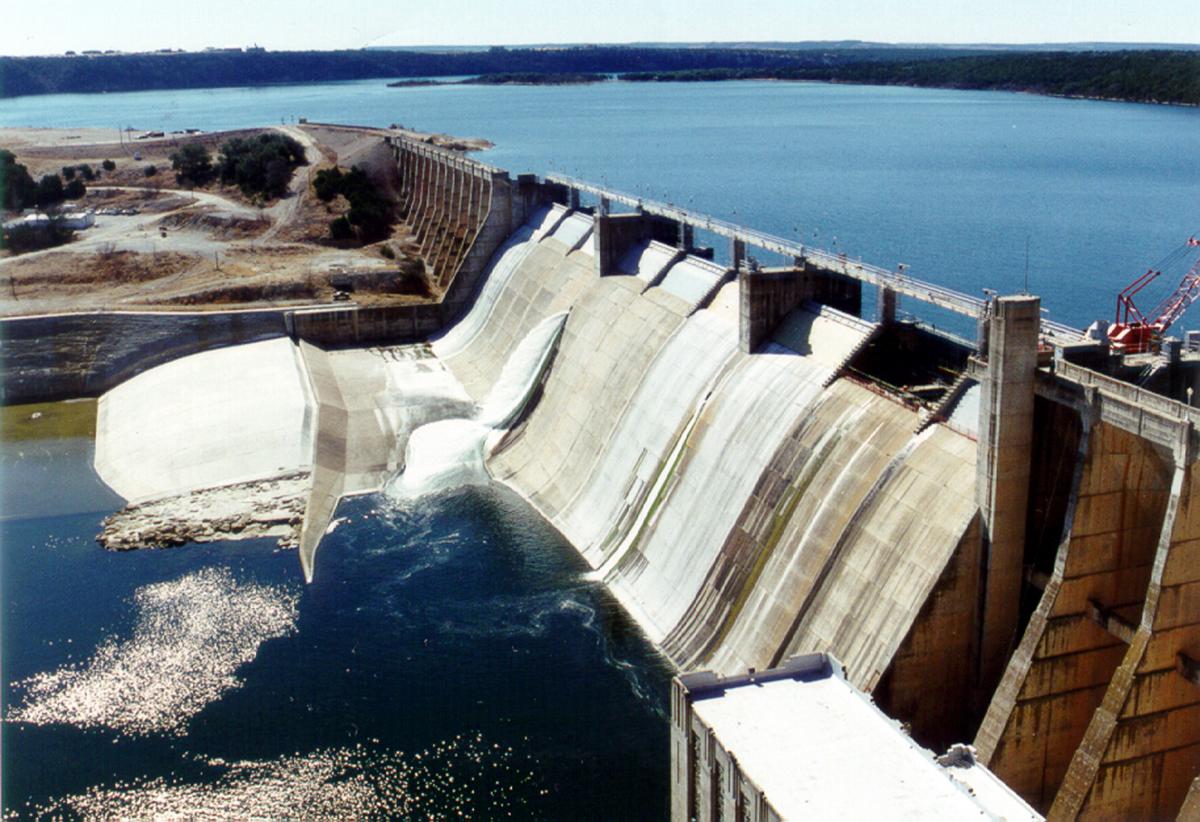
In December 1986, Freese and Nichols dam expert Bob Thompson detected signs of movement during a routine five-year inspection required by the Federal Energy Regulatory Commission. He found cracks in the footings of the spillway suggesting structural distress.
Measurements revealed that the dam had slipped about 4.5 inches downstream in the decades since the reservoir filled in 1941. Were it to fail, releasing 570,000 acre-feet of lake water, loss of life and property downstream could be catastrophic. Only the strong construction of the 46-year-old dam—the nation’s largest of the flat slab buttress type—had enabled the WPA-built structure to withstand the unusual forces acting on it. The stresses were well beyond the original design limits.
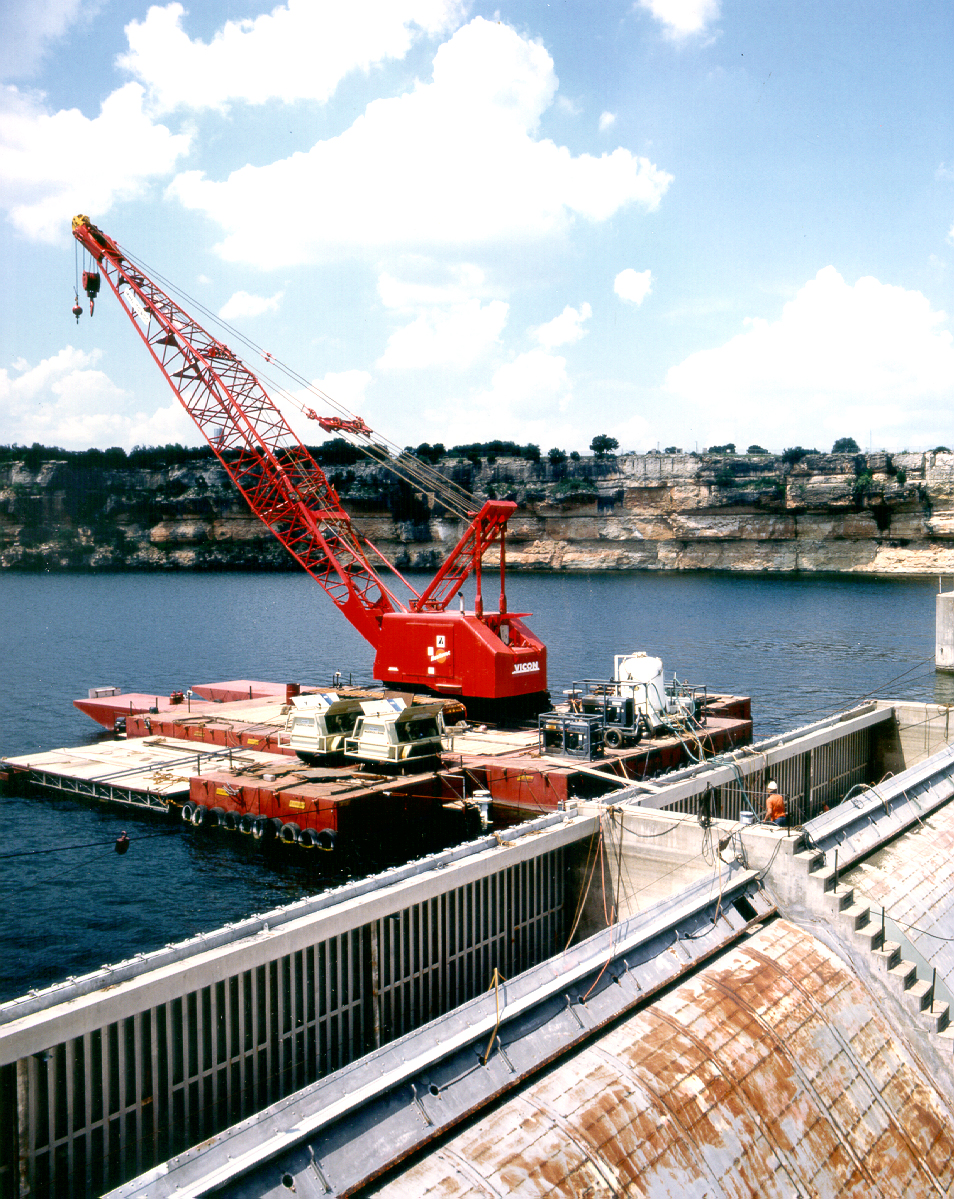
Working with the Brazos River Authority, owner and operator of the dam and its hydropower plant, the firm investigated the cause of the slippage. Foundation borings found dangerously high hydrostatic pressure in shale seams under the dam. The pressure had built up slowly during the structure’s life and now was exerting a lifting force. That, combined with the weight of water in the reservoir, was gradually nudging the dam downstream. Permanent measures were needed to reduce the pressure and increase the dam’s gravitational resistance to sliding. Freese and Nichols recommended a two-part remedy: Drill relief wells to reduce uplift pressures from water trapped in the dam’s rock foundation and place crushed rock inside the mostly hollow spillway to increase the structure’s weight and frictional resistance to movement. Bob Gooch was the firm’s principal-in-charge of the work, and Bob Thompson was the project manager.
As a safety precaution, the lake was lowered 13 feet while repairs were made. “Dumping” almost one-third of the reservoir’s capacity left boat docks high and dry, curtailed the area’s boat rental and fishing supply business and threatened major economic harm to the lake community. Kept well informed, however, local citizens made the most of the lake’s low level by publicizing the enhanced fishing.
To warn of danger early and provide information for solving the stability problem, a precision survey network and instruments were installed to monitor movement and pressure changes. To gain access inside the spillway section of the dam, workers cut holes eight feet in diameter through twenty-four individual, nine-foot-thick concrete buttresses. Drilling through each buttress took three 24-hour work days. Once inside, workers cleared away mud, muck, and debris and then dumped gravel and crushed rock into the bays to form a work platform to support drilling equipment. Drillers sank 147 wells as deep as one hundred feet into the dam’s clay shale foundation. A cracked concrete beam channeling water into the foundation was grouted, and 66,000 cubic yards of crushed rock were placed inside the spillway for ballast.
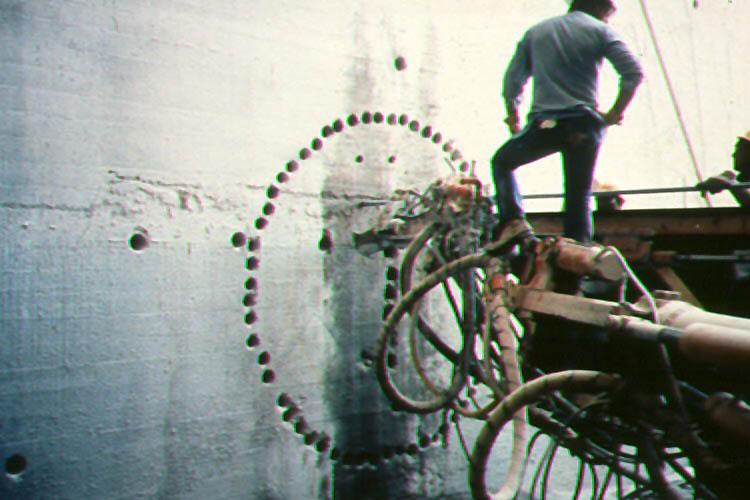
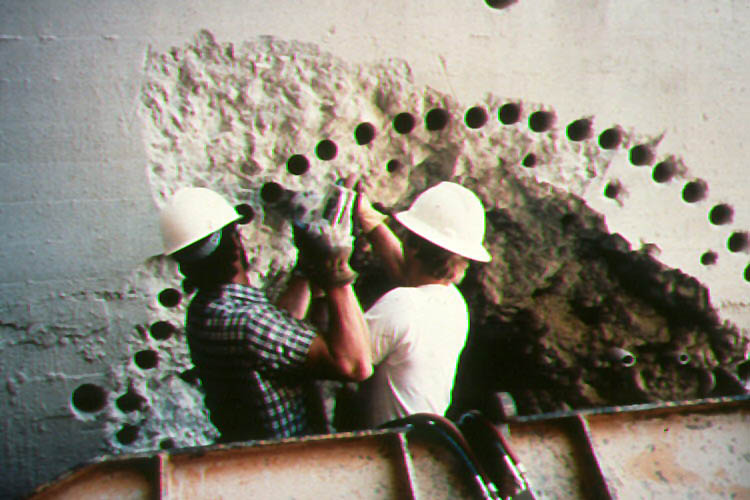
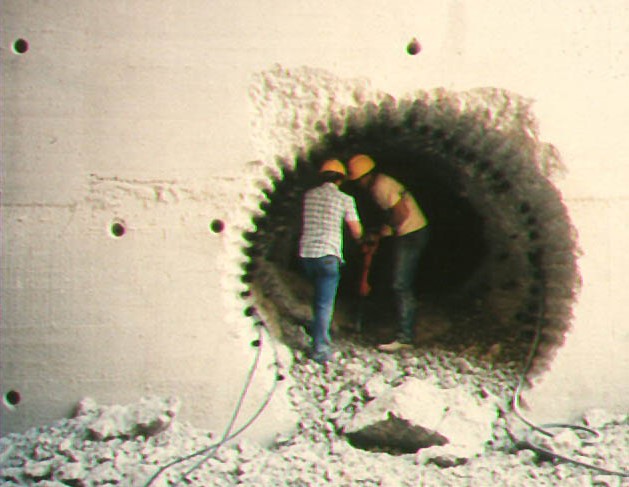
Repairs were estimated to cost more than twice the dam’s $8.5 million Depression-era construction price.
The National Society of Professional Engineers named Freese and Nichols’ emergency repairs to Morris Sheppard Dam one of the eight outstanding American engineering achievements of 1989. The work also won the Engineering Excellence Award of the Consulting Engineers Council of Texas. Following the first phase of restoration, completed in March 1989, the reservoir was raised to normal levels, and the power plant resumed full operations. A second phase of improvements in 1991 included the construction of a new 1,400-foot-long emergency spillway to pass the probable maximum flood.